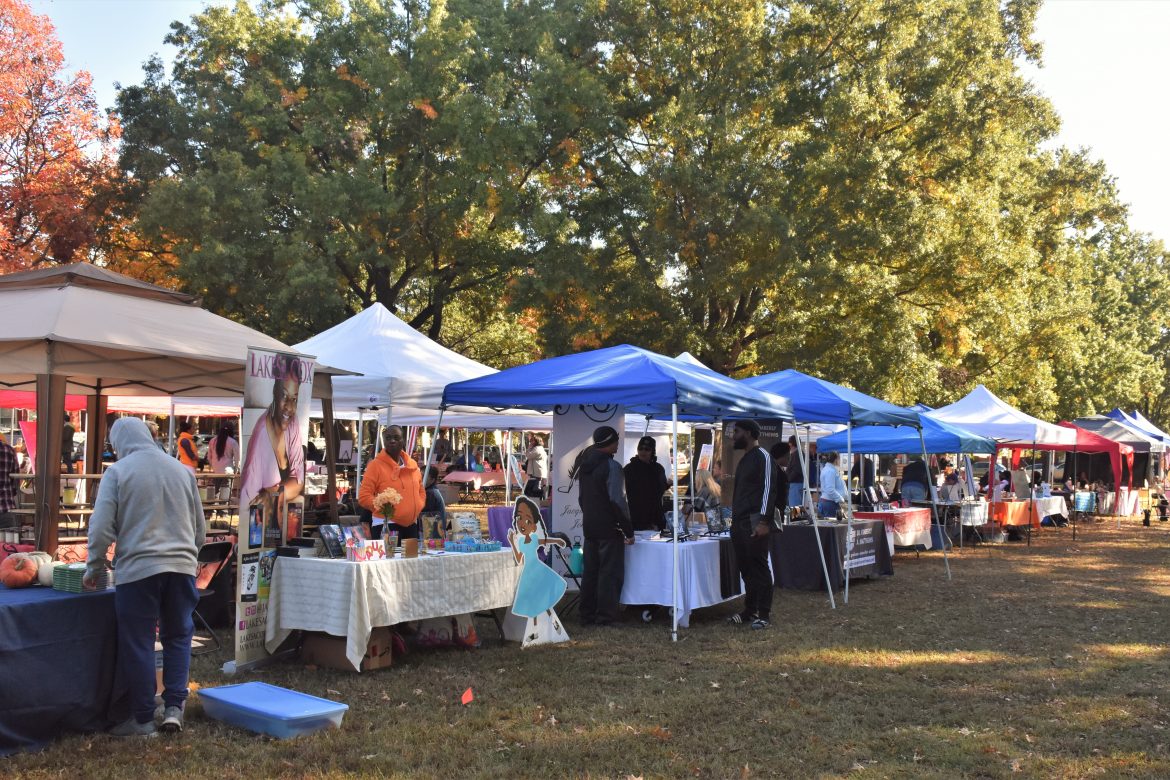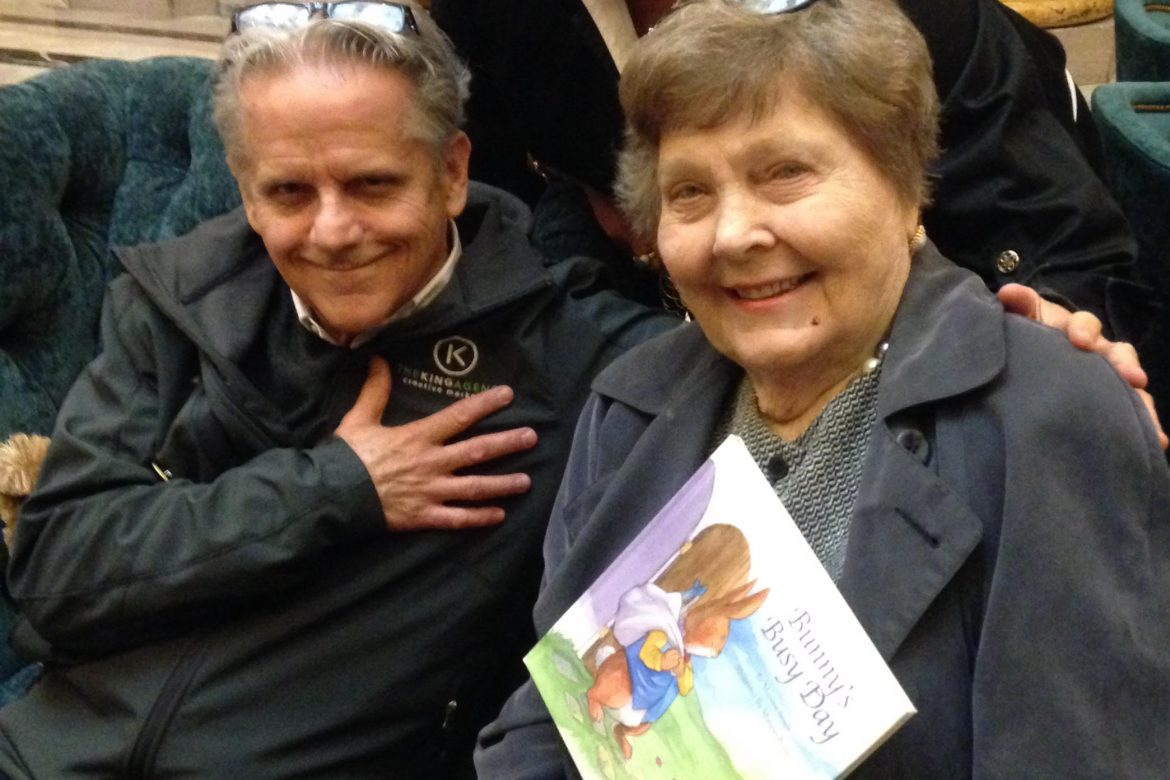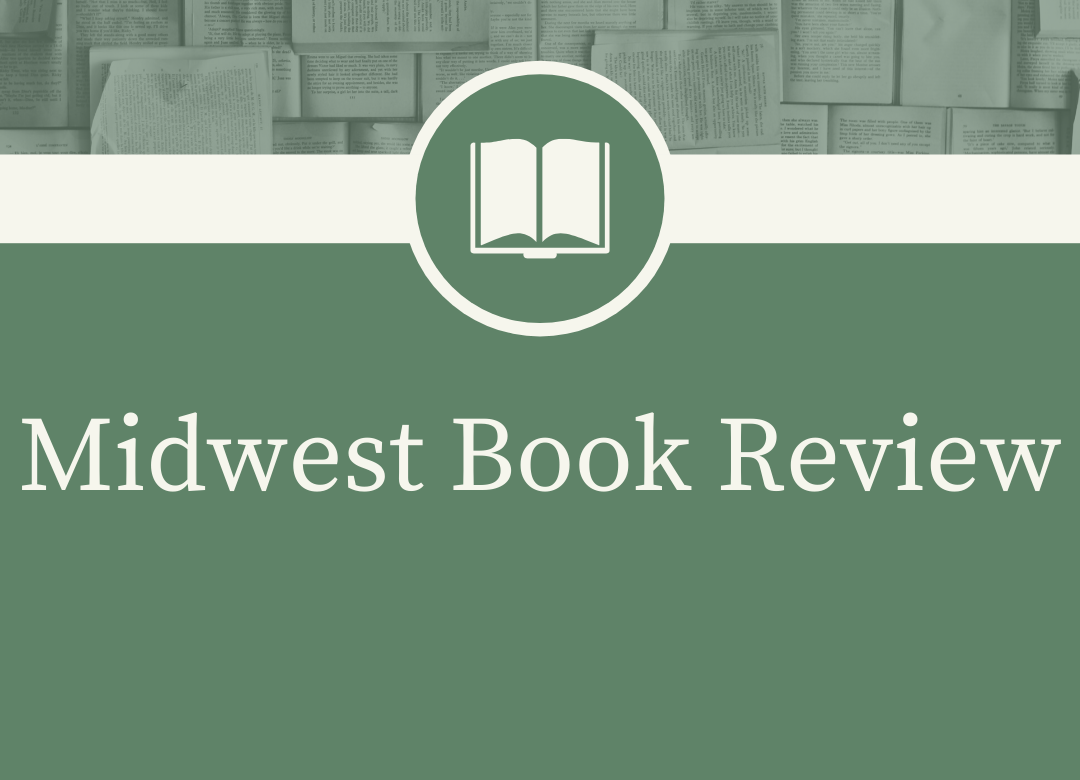Amateur Professional Photography
As a writer, you’re going to need pictures. Professional author photos appear on the back of your book, in event documentation, rock your social media pages, and more—there are a ton of ways you can use photography in your favor. With technology improving more rapidly than ever, the general public is getting better and better at spotting amateurish photography. The good news is that professional-looking photography is no longer only for professional photographers.
Basic Tips
There are a few basic tips to keep in mind whenever you are taking any kind of photos:
If you have access to one, use a real camera. If you don't, try an iPhone, as they have excellent cameras.
Make sure your light source is in front of the subject, meaning the light source is often behind the photographer, not behind the subject. Capturing the sun or another bright light in the background can overwhelm the shot. Taking photos through shadows of tree branches will cut up your shot visually.
Take photos head-on when possible. This is more important when photographing books than people, as the linear outline of a book reveals an off-kilter shot more obviously than the roundness of someone’s head. If the shot is going to be crooked or off-center, make sure it’s deliberately so.
Take many pictures, then scroll through to find the ones that are most attractive, level, and in-focus.
Taking Excellent Author Photos
Your author photo is the only image most of your readers will see of you. If you can’t have professional headshots taken, here are some tips for getting that perfect shot:
Have someone else take the photo. It's clear when your author photo is a selfie, which is a more casual kind of photography.
Wear something with no logos or distracting images and in a color that makes your features pop!
Have your photographer stand back far enough that they can capture more than just a close-up of your face. We should be able to see your whole head and an inch or so above it, plus at least your shoulders.
Check out the staff page of our website to get a better idea of what an excellent headshot looks like.
Photographing Events
Enlisting a friend or family member or hire a professional to photograph your event will help you a lot. If that’s not possible, or if you need to offer guidance to your designated photographer, consider the following:
Take dynamic photos from a variety of different angles.
Snap shots of different things: the speaker or presenter, the venue, any table or display, activities, and more.
Avoid taking photos of children’s faces without their parents’ permission.
Filters
Most photo editing programs come equipped with “filters”. As on a traditional camera, a filter is used to modify the entire image by changing elements like the color, light, contrast, or focus. A digital filter can be found in the photo editor that comes preloaded on your phone, on Instagram, or in some other photo editor. A filter can enhance a photo to make its colors more vivid or crisp, but it can also easily overpower your image.
Scroll through all your filter options to choose the best one.
Often, you can click a filter twice or perform another shortcut to find a gradient. Using this, you can apply the effect of your filter only slightly or as high as it goes.
When it comes to filters, a little goes a long way! Choose something subtle that enhances certain features of the photo.
Cropping
We’ve all seen a photo where the subject in the foreground looks great, but then you notice someone picking their nose in the background! Whether it’s a silly stranger, an ugly setting, or just too much empty space, cropping your photo can help bring attention where you want it and omit distractors. The “crop” icon always resembles this symbol:
When cropping a photo, the finished product should feature the subject of the photograph in the middle of the picture or artfully balanced in some way.
Crop a photo when there is something in the background that distracts from the main subject.
Other tools
One of the best ways to get the hang of taking excellent photos on your own is to simply mess around with the tools you have. Below is an example of the different ways you can adjust the look of a photo using iPhoto for iPhone. They all do slightly different things, and it’s better to try them out than to explain them all here. Here are some of the more notable ones:
Brightness can add light to a dim image (though beware of overdoing it, as seen in the image below, which is clearly too bright.
Contrast can add more brights and darks to a bland or dull image.
Color can be helpful if your image has an unpleasant hue. For example, if your image is a little green due to light being filtered through water, you can add a light red layer over this, balancing out the green.
When you know what you’re doing, photography can be a ton of fun! It can also strengthen your online presence and add a new skill set to you CV. So go on—it’ll be fall soon, and the perfect time of year to get outside and practice snapping shots!
Star Ratings & Reviews
The two most important avenues for book marketing are the internet and word of mouth. Online reviews combine these! A good online review can be the push that helps someone decide to purchase your book.
The more online reviews you have on Amazon and Barnes & Noble, the higher your book will rank in searches. This means your book will more likely show up when people type in your genre or browse for new titles to read.
How to get book reviews
Ask!
Turn to your friends and family who have read your book.
Request that your Facebook followers rate your professional Facebook page or redirect them to Amazon or Barnes & Noble.
If a person has bought your book through Amazon, their review will show up as an Amazon “verified purchase” review. If they bought it elsewhere, they can still review on Amazon, and the star-rating will be averaged in with the rest.
Anyone can rate your book on Barnes & Noble and all reviews appear to be the same, whether or not they purchased your book through Barnes & Noble. They will just need a Barnes & Noble account to log in.
Ask your loyal fans. When someone reaches out to you personally to tell you how much they enjoyed your book, thank them (of course), and then ask if they would mind leaving those same sentiments in an online review.
Trade!
Find another author who is looking for online reviews, read each other’s books, and leave each other reviews!
Find other things to trade for. Maybe it will be easier for another author or a reader to find the time to read and review your book if you help them in other ways! Maybe they need a short story edited or want an endorsement for their own book.
Caution: You don’t want to leave a good review for a book you didn’t enjoy! It might be best to offer this trade to someone whose book you’ve already read or are confident you’ll enjoy.
Offer rewards!
Send an email newsletter or post on social media offering a giveaway or entrance in a contest in exchange for an online review.
Caution: Do not ask for “good” reviews! Ask your followers for honest reviews.
How to Handle Book Reviews
The good, the bad, and the ugly: these are the different kinds of book reviews. Online, people feel more comfortable showing their worst selves. However, people also take to the internet to bolster and engage with people they support. You’ll likely get some reviews on Amazon, Barnes & Noble, Facebook, or elsewhere, and they’ll likely be in your favor. However, you might also encounter some reviews you weren’t expecting. Read on to learn about how to respond to online reviews—the good, the bad, and the ugly.
How to handle bad reviews
Consider their points: Make the most of a bad review by taking their points into consideration. Think critically. Perhaps you do need to improve in these areas.
“Thanks for your honesty. I’ll be sure to pay more attention to commas in the sequel!”
Correct them: If the person who left the bad review has objectively made a mistake, thank them for their perspective and gently set them straight.
“I’m glad you enjoyed my book enough to fact-check me! It’s true that not all of the events in my book took place in real life, which is why I thought it was important to add a disclaimer on the first page about identifying the genre historical fiction.”
Deflect them: If someone left a bad review for personal reasons (ie. they don’t read your genre or they personally disagree with moves you made), thank them for their comment and then redirect them to another work of yours or you’ve read that may be better suited to their literary palate.
“Sorry the bloodshed in my novel was a little much for you! If you’re looking for something a little less gruesome, you might like this book I read last summer.”
Delete them: Sometimes, people do crazy, random, terrible things online. If someone has gone over-the-top attacking you or is wildly incorrect, it’s okay to delete their comment and even block them from your page.
For a great example of how not to handle a bad review, check out how defensive this author got when she received a two-star review.
How to handle good reviews
Thank them for their kind words!
Encourage them to cross-post their review on another site.
Encourage them to share with friends.
How to use good reviews
Share on social media! If you get a Facebook review, it will automatically show up on your page. However, you can still share it to other SM sites. If you get a good Amazon or Barnes & Noble review, share across the board! Take a snippet to share in your post, then invite followers to click the link to read more.
Post on your website! Add a “praise” tab where you can post any good reviews you receive.
Use quotes in promotional efforts! Slap a great quote from a review at the top of a letter you’re writing to try to sell books or organize an event.
The world of online book reviews can be wild, but equipped with the right tools, you’re sure to navigate the waters with skill!
For young Billy, summer means saying goodbye to city life and traveling seven hundred miles to visit his grandparents on their Tennessee farm. It means long, humid days of snapping beans, milking cows, hunting for fossils in rocky fields, and trips into town for ice-cream sodas and comic books at the five-and-dime. It means muggy nights spent on the front porch with family, the boys gathered around the big Philco radio, listening to The Lone Ranger over the low hum of crickets. But most of all, summer means time spent in the long shadow of Grandpa, a massive Welchman, keenly observant, frugal of words and actions, but rich in experience and country wisdom. On this remote patch of farmland, Grandpa's word is law. Now a retired minister and former Adjunct Professor of Christian Spirituality at Baptist Theological Seminary in Richmond, in the pages of "Dinosaurs in the Cornfield: Lessons Unearthed on My Grandfather's Farm", William Hardison looks back on those summer days with nostalgic fondness and his own hard-earned wisdom. In doing so, he rediscovers deeper lessons hidden within the adventures he so often took for granted as an energetic child. Exceptionally well written, "Dinosaurs in the Cornfield" is an absorbingly thoughtful and thought-provoking memoir that is very highly recommended and will prove to be a valued and appreciated addition to community library American Biography collections.
http://www.midwestbookreview.com/wbw/jun_18.htm#Biography
Book Festivals
As a reader, book festivals are a ton of fun. As an author, they can be a ton of fun and a ton of work, but they can also give you and your book great exposure! Here are some tips about how to excel when you attend your next book festival.
Learning About Book Festivals
How does one find out about book festivals?
Brandylane: Brandylane Publicity sends regular emails listing book festivals across the country with upcoming submission deadlines. We try to maintain a comprehensive list of festivals, so if there’s one in your area we missed, let us know about it at brandylanepr@gmail.com!
An internet search: Run a quick Google search for book festivals in a specific location.
Social media: Follow book festivals on Facebook, Twitter, or Instagram to get updates directly from festival organizers.
Email newsletters: Sign up for the email newsletter of one or several festivals you would like to participate in to receive updates directly to your inbox. Most of their websites should include this sign-up option.
Ways to Participate in Book Festivals
There are several ways an author can be involved in a book festival. You may even be able to participate in more than one way, time and resources permitting.
Seller: Many book festivals have opportunities for authors to be vendors. As a vendor, you can set up a table to sell and sign copies of your book. This is a great place to find people who love to read and are ready to take books home.
Speaker: There may be an opportunity for you to speak at a book festival, either as part of a panel or independently. This is a great way to get attendees engaged in your book and familiar with you and your title(s). Often, you will be permitted to sell and sign books after the panel or presentation, and this is a great time to meet fans.
Volunteer: If you’re not interested in speaking or selling, or if your book doesn’t meet the festival’s requirements, you can volunteer. This will provide you with inside knowledge about festival happenings and allow you to contribute. You may even get the chance to meet some VIPs or festival organizers—get your name out there!
Attend: If you’re not interested in being a vendor, speaker, or volunteer, but you still want to be a part of a festival, simply go! Attend the workshops and presentations, meet other authors, take notes, and be a part of the excitement.
Signing Up for Book Festivals
The steps to participate vary among the many different festivals, so here are guidelines to help you find your way. Pay close attention to the specific requirements of each festival.
Do research. Visit the festival website to ensure it’s the right kind of festival for you. For example, approaching a children’s book festival with a memoir is a waste of time for you and the organizers who will ultimately reject your application. If they only accept books released in the last year, your 2014 book is not appropriate.
Note deadlines. Some festivals will accept applications until spots are filled. In this case, act quickly, as you have no way of knowing when will be too late. Most festivals have an application deadline. Some festivals offer discounts to earlybird applicants or penalties to late applicants.
Find out how to apply. You may be able to simply sign up. More likely, however, you will be required to fill out an application and await approval. There may even be a small application fee. You may have to email an organizer or complete a form on the website.
Complete your application. Make sure you have all your materials ready and fill out everything meticulously.
Wait to hear back! If several weeks pass without any updates, be sure to follow up.
Preparing for a Book Festival
As soon as you have signed the forms, paid your fees, and secured your attendance, it’s time to start getting ready.
Announce your upcoming book festival attendance on social media, email, and more.
Plan your presentation. We could—and might—write a whole ‘nother marketing tip about how to prepare to speak at a festival. Suffice it to say: Be prepared. Know what is expected and practice ahead of time. Don’t forget to mention your book!
Gather your materials. This may include a table and setting, cases of your book for sale, or other items. Whether you’re selling books or just an attendee, business cards are a great idea to help you connect with people you meet.
Be prepared with information about how to get there, where to park, and where you will set up or speak.
Schedule. Whether you are vending, speaking, volunteering, or simply attending, view the schedule of events ahead of time so you know which you would like to attend!
Attending a Book Festival
Attend as many events, sessions, workshops, etc. as you can. Try to make decisions about what to attend based on your genre and weak spots. Sessions with literary agents and publishers can provide invaluable inside knowledge on the industry.
Introduce yourself to as many people as possible. Exchange cards, connect on social media, and don’t forget to follow up when you get home!
Whether you are presenting or selling, be prepared, do it well, and have fun!
After a Book Festival
Post about it on social media and/or recap in an email newsletter. Use any photos you took and tag the appropriate parties!
Thank those who helped you. If you were in touch with someone who worked for the festival, thank them. If a friend or family member helped you prepare or came with you, thank them.
Connect online with people you met. Use social media to make a lasting connection with other authors, agents or publishers, and fans who you met or whose sessions you attended.
Then it’s time to start thinking about the next festival, or thinking about what you can do differently at the same festival next year!
When Doctors Won’t Listen – Milwaukee Community Journal
https://communityjournal.net/when-doctors-wont-listen-eight-ways-being-ignored-discounted-or-humiliated-by-doctors-damage-you-and-your-loved-ones/
Read More
Categories:
Exploring Book Topics
Marketing for Introverts
It may seem like marketing, especially self-promotion, is geared toward extroverts. Many marketing agents and publicists thrive in their positions due to their bold, outgoing natures. However, there is a place for introverts in the land of marketing, as well.
If you’re an introvert, the typical schmoozing, corresponding, and shouting from the rooftops that take place in a promotional campaign may be your worst nightmare. We’re here to tell you that it doesn’t have to be this way! There are things you can do to use your personality to your benefit.
Extroverts, feel free to skip this one, or pass it on to an introverted friend who may be in need. Introverts, buckle up and take notes.
Maximize Interactions
Take advantage of one-on-one marketing opportunities. This will allow you to:
Make more personal connections
Communicate your ideas clearly
Be open about your needs and don’t be afraid to be honest:
“I’m going to need a few days to think about this; if I don’t get back to you within a day or two, definitely feel free to reach out.”
“I’m thinking about this and will get back to you later.”
“I need a walk to clear my head and formulate my thoughts.”
Christina Kann, Brandylane’s in-house publicist, is always available to talk marketing with you! Feel free to reach out to her directly at brandylanepr@gmail.com to discuss promotion.
Be Prepared
Here are some strategies we have found help authors feel comfortable, prepared, and confident when being interviewed or making contact with booksellers/venues:
Write an outline or script of what you want to say during a phone conversation before you make the call. This way, you don’t have to worry about forgetting something.
Practice reading through the script before you make the call.
Have a friend or family member role-play so you can practice your conversation in a realistic situation.
Develop several scripts for different uses. You can leave blanks for people’s names and more so you can tweak it for each audience.
If you have a phone interview, ask them to email you the questions ahead of time.
Prepare answers so you’ll experience minimal surprises.
Asking for questions ahead of time is a normal request, and interviewers should be happy to accommodate you.
Public events can be daunting, but preparation is key.
Practice what you want to say with a friend before presenting. You can build confidence, and they can give you tips to help improve your performance.
Bring notes — either notecards with phrases and keywords or actual sentences. Sometimes if you are nervous, stringing words into a competent sentence is hard, and having the sentences already composed in front of you will help.
Catering to Introvert Strengths
Find a medium that works for you. Low-interaction methods can often be the most comfortable. Email, social media, and blog-writing are great ways to garner a following without actively engaging.
It’s important to follow up. If you made a phone call the first time, you can switch to a more comfortable form of communication, such as an email, to reduce your stress, but mention in your email that you’ve previously contacted by phone.
Schedule your marketing efforts (like social media and email), as trying to do many things at once may be overwhelming! There are plenty of great scheduling programs for any social media platform. Here at Brandylane, we use Hootsuite for Twitter and Buffer for Instagram. Facebook has a built-in scheduling function for professional pages.
Take Care of Yourself
Schedule “me” time to recharge. You will be better able to market your work when you don’t feel drained.
If you don’t feel up to doing something like making a phone call, and it isn’t time sensitive, wait until you feel more comfortable and are able to best represent yourself.
Remind yourself of all your unique strengths that can augment your marketing:
Your ability to listen to the consumer is a valuable asset.
You think before you speak..
Don’t worry, you got this!
Promotion can be a challenge, but it’s an important part of being an author. Once you start to get in the habit of using some of the tips mentioned above, you will find it easier to champion yourself and your work!
Healthy Cells Magazine – A Call to Mind
Check out this wonderful feature article in Healthy Cells Magazine. Let Claire Galloway, author of A Call to Mind, share her experience with her son's TBI.
http://cdn.agilitycms.com/healthy-cells-magazine/FlipBook/springfield-decatur/0218-springfield/index.html#p=1
Read More
Categories:
Exploring Book Topics
You’re Never Too Old to Try Something New: Marilyn Seigle Author Profile
Surrounded by the opulent beauty of the Jefferson Hotel, I sat with author Marilyn Seigle. Almost immediately, we fell into easy conversation. As Marilyn regaled me with tales from her childhood in Kansas City to her shotgun wedding some years later, I found myself getting caught up in her life stories, almost as if I’d been there myself. You see, at 87 years young, Marilyn has lived an enviable life--a life full of laughter, love, and stories worth telling. At her core, Marilyn is a storyteller, and it doesn’t take more than an afternoon with her to see that. As her daughter, Sally, who joined in our conversation, put it, her mother “has wonderful stories that she tells very well.”
When I asked Marilyn how long ago she began writing stories, she knew right away, down to the year. It was 1955, about six months after her whirlwind wedding with army officer John Seigle. Before getting married, Marilyn and John had known each other for only three months and ended up planning their wedding in three days. According to Marilyn, “the rest was history,” and the two enjoyed forty years of marriage together. It was during that first year, though, that the realities inherent with military life began to set in for Marilyn. The two were living at Fort Knox, and John was away much of the time due to the demands of his military career. At the time, there was a hiring freeze on at the post, and Marilyn was unable to get a job. So, she picked up a pen and started writing poetry. Up until then, Marilyn said, “I didn’t even know I could write verse.”
Ever since, Marilyn has turned to writing in tough times and in good. She recounts a time when she was stuck on a broken-down subway train, which was an especially unfortunate situation, because she has combated claustrophobia for years. Marilyn said, “Any time I’m in a difficult situation, I can talk [or write] my way out of it,” and that’s just what she did. As she sat on the train, the lights flickering above her, she calmed her escalating nerves by taking out her pen and paper, and writing this verse:
Here I am, alas alack!
Sitting down here on the railroad track,
Where it’s dark and not so pretty,
In the bowels of New York City.
Surely wish someone would come
Fix this train and make it run…
As Marilyn casually rattled off the little poem she had written on that broken-down train, I sat completely delighted and totally amazed by her ability to remember those words she had written so many years ago. This was not the first (or the last) time during our conversation Marilyn broke out into verse, and somehow, each instance was even more endearing and hilarious than the last.
With so many entertaining poems and stories at her fingertips, it’s a wonder that Marilyn didn’t seek a publisher for her work earlier in life. Indeed, Marilyn became a published author at the age of 85, with the publication of her adorable children’s book, Bunny’s Busy Day in 2016. When I asked Marilyn what prompted her to seek out a publisher, she said that many people encouraged her. Of course, her family, especially her brother, urged her to get her work published, but she was always hesitant for fear of how difficult it might be. In the end, it was one of Marilyn’s closest friends and Brandylane author, Tansill Johnson, who finally convinced her. Marilyn said, “Tansill is the one who got me to you, and I’m forever grateful.”
When it came to choosing which story she wanted to submit for publication, and there were many to choose from, Marilyn said she picked Bunny’s Busy Day because she wrote it for her grandchildren nearly twenty-five years ago, and it’s a special one. The story follows the Easter Bunny as he prepares for Easter morning. Johnny and Andrea Bunny, named after Marilyn’s grandkids, must help the Easter Bunny fill baskets to the brim so that they’re ready to be delivered to children on Easter morning. A sweet and adorable tale, Bunny’s Busy Day has proven to be a holiday favorite.
Since the publication of her first children’s book in 2016, Marilyn has been inundated with requests from friends, family, even acquaintances, asking her to write poems for them. From get-well cards and thank-you notes to anniversary poems and birthday verses, Marilyn’s poetry has become quite the commodity. Marilyn is tickled every time she receives a request from someone, and she’s happy to oblige! But that’s not to say Marilyn hasn’t been busy with other writing endeavors—she’s been hard at work with us in publishing her second book, Boswell Bear Goes to School. Marilyn said she absolutely had to have another book published because “one is a fluke, but [publishing] two shows I’m a real author!” Boswell Bear Goes to School officially releases March 15, 2018.
To Marilyn’s extreme delight, during our conversation we were joined by Robert Pruett, founder and president of Brandylane Publishers. It was at this point that any semblance of formality in our conversation melted away. When Marilyn saw him, she exclaimed, “You’re one of my favorite people!” and Marilyn, Sally, and Robert commenced to chatting like old friends, despite this being the first time they’d met in person.
The conversation became a blend of one story after another. Robert talked with Marilyn and Sally about his career as a teacher, road trips gone wrong, his time living in the Northern Neck, and how Brandylane came to be. Marilyn, with hilarious interjections from Sally, talked about experiences living abroad in Germany and Belgium, a p-p-peachy trip to Turkey, and summers in Italy. The three of them chatted about everything from friends, family, health, and books, to the phases of life. All the while, I laughed along with them, happily listening to each story they shared.
As the conversation came to a close, and we began saying our goodbyes, it struck me just how special it is to be in a room full of storytellers. It’s a unique privilege to be able to listen to stories that become even more special in the telling, and I feel privileged to have shared this story of the first time I met the witty, effervescent, and exceedingly endearing Marilyn Seigle.
Read More
Categories:
Author Profile
Midwest Book Review – Coco’s Number Nightmare
Coco is a little girl who loves almost everything about third grade -- except math! Coco's friends adore playing multiplication games, which only makes her feel worse about math. After struggling with homework and losing a game in front of her whole class, Coco feels humiliated and has a terrible nightmare! In her dream, the Multiplication Monster laughs an evil laugh and attacks her in front of her classmates when she answers a problem wrong. In Coco's Number Nightmare children ages 6 to 8 will find out how Coco overcomes her fear of math, gets rid of the malicious Multiplication Monster, and learns the value of a teacher who believes in her! The collaborative effort of author Georgie Hanlin and illustrator Maegan Penley, "Coco's Number Nightmare" is an especially recommended addition to family, elementary school, and community library picture book collections for young readers.
http://www.midwestbookreview.com/cbw/jan_18.htm#Math








